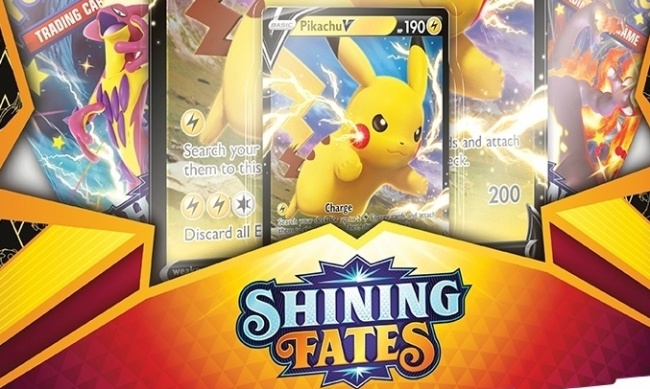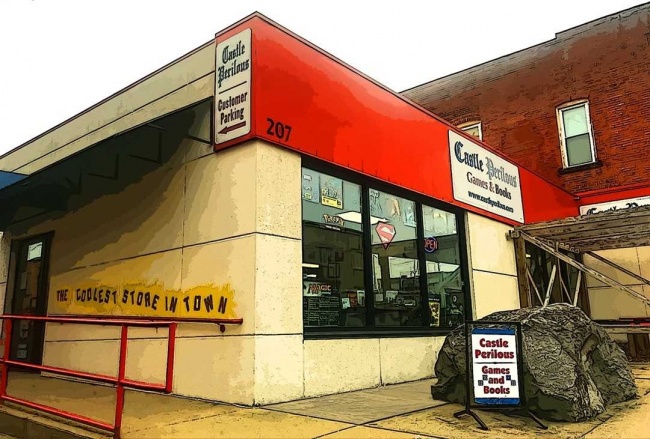Rolling for Initiative is a weekly column by Scott Thorne, PhD, owner of Castle Perilous Games & Books in Carbondale, Illinois and instructor in marketing at Southeast Missouri State University. This week, Thorne talks Pokemon TCG preorders and three ways publishers can improve their box designs.
Both Yu-Gi-Oh! Blazing Vortex (see " 'Blazing Vortex''") and Magic: The Gathering's Kaldheim (see " 'Kaldheim'") released this week, but naturally, most of our calls came from people hunting the ever elusive Pokemon booster pack. We have had a number of people wanting to come in and preorder the Shining Fates (see "'Shining Fates'") sets, but we are loathe to take preorders for any of the items releasing as we have no idea if our orders will get allocated. Currently sellers taking preorders for the Shining Fates Elite Trainer Box on eBay are asking, and getting, $100 to $150 for a box with a MSRP of $49.99.
No individual boosters or booster boxes are coming out for the set and the current demand for Pokemon boosters (not decks though; we had a customer change his mind about buying Pokemon decks when they found out the decks were not oversized booster packs) means a likely sellout of all things Shining Fates since that will be the only way to get the new cards. I'm not sure how long this feeding frenzy for Pokemon cards will last, but it's likely to be curtailed when people stop spending six figures on sealed Pokemon booster boxes, giving customers the impression that all things Pokemon have a chance of commanding those prices (see "Another Heritage Auction Brings Yet Another Record-Setting Sales Number for 'Pokemon TCG 1st Edition' Sealed Product").
On an unrelated note, with the ever increasing number of publishers using Kickstarter as a funding platform to publish games both DTC (direct to consumer) and for sale in the retail channel, a quick refresher on what makes good package design at the retail level is likely in order:
Eye-Catching Cover. Although a KS campaign may have sold the buyer on the game because it had videos and updates giving them additional information about it, a customer walking the brick-and-mortar store floor or even browsing on a website will first notice an attractive box design. KS DTC games can come in a bland box, as the primary purpose of the box is to protect its components. Once in the retail channel, the box serves dual purposes of both protecting the contents and promoting them.
Readable Font. There is a reason one sees the same fonts used over and over again in print, on book covers and on packages: they are readable. Again, the font matters little to the KS customer as they already know what the game is. To sell the product to the retail customer, the publisher needs to make it as easy for them to identify the game as possible. Next time you are in a supermarket, take a walk through the packaged cereal, detergent, or paper towel (assuming there are any) aisles. The manufacturers make sure the name of the product is clear and bold. They want it to stand out to the customer among all of the other similar products there.
Repeat the Name. As many times as possible, at least on the front of the box and on each of the box sides. For the KS and for online displays, one side is sufficient, but in a brick-and-mortar store, publishers cannot guarantee how the game will get displayed. Having it on all four sides and the front makes sure that, no matter how racked, its name gets displayed. Games Workshop is still prone to this problem, putting box warnings on one edge of the box with no indication as to what the product inside is.
Any other ideas on improving box design or Pokemon pricing? Send them to castleperilousgames@gmail.com.
The opinions expressed in this column are solely those of the writer, and do not necessarily reflect the views of the editorial staff of ICv2.com.

Column by Scott Thorne
Posted by Scott Thorne on February 7, 2021 @ 11:15 am CT



